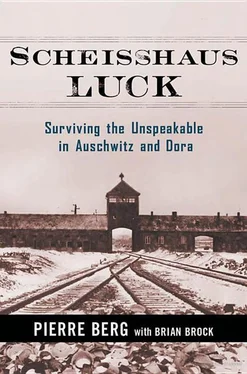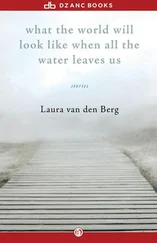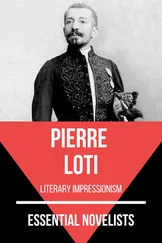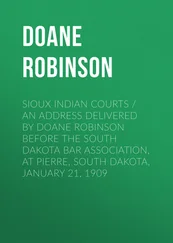GLOSSARY
APPELPLATZ(German) The place for roll call (Appel) in the camps.
AUSCHWITZThe original Auschwitz camp (Auschwitz I) was built in 1940 in the suburbs of the Polish city of Oswiecim. On June 14, 1940, the first convoy of Polish political prisoners—728 men—arrived at the camp. By 1943, Auschwitz was the largest Nazi camp complex, with three main camps—Auschwitz I, Auschwitz II-Birkenau, and Auschwitz III-Monowitz—and some forty subcamps. Over 50 percent of the registered Häftlinge in the Auschwitz complex died; 70 to 75 percent of each transport was sent straight to the gas chambers. Untold numbers of victims of the gas chambers were never registered. The total number of Jews murdered in Auschwitz will never be known, but estimates range from 1 million and 2.5 million. The next highest groups were Poles and Russian POWs, most of them dying in the construction of the I.G. Farben plant and as gas chamber “guinea pigs,” and Gypsies . Auschwitz was liberated by the Soviet army on January 27, 1945.
BIBELFORSCHER(German) A Jehovah’s Witness, a purple triangle. German Jehovah’s Witnesses, because of their beliefs, refused to use the Hitler salute, salute the Nazi flag, bear arms as soldiers, or participate in affairs of the government. Viewed as enemies of the state, many Jehovah’s Witnesses lost their jobs, homes, businesses, and pen-sions. If they renounced their faith, they could avoid persecution. Over 900 Jehovah’s Witness children who refused to join the Hitler Youth were thrown into penal institutions and juvenile homes. Jehovah’s Witness publications wrote many scathing articles on Hitler’s regime and on the concentration camps. In 1937, the magazine Consolation ran an article on poison-gas experiments in Dachau, and in June 1940, the magazine stated, “There were 3,500,000 Jews in Poland when Germany began its Blitzkrieg… and if reports are correct their destruction seems well under way.” Auschwitz camp commander Rudolf Franz Höss saw the Bibelforscher in his camp as “poor idiots who were quite happy in their own way.” Over 10,000 German and European Jehovah’s Witnesses were shipped to concentration camps. It’s estimated that between 4,000 and 5,000 Jehovah’s Witnesses were murdered during the Nazis’ reign, more than 1,500 of them in the camps.
BIRKENAU(German) Literally “birch grove,” this was Auschwitz II, an extermination camp built in October 1941 and located near the Polish village of Brzezinka. In the spring of 1942, the “showers” and crematoriums were operational. On October 10, 1944, there was the uprising of the Sonderkommando, during which the prisoner crew of crematoria IV revolted and destroyed the crematories. In November 1944, Heinrich Himmler shut down the gas chambers and made efforts to conceal the mass murder that had taken place there.
BLOCK/BLOCKS(German) Barracks.
BLOCKAELTESTE/R(German) Barracks supervisor/s.
BLOKOWA(Polish) Female barracks supervisor.
BLOKOWY(Polish) Barracks supervisor.
BOCHE/BOCHES(French/slang) A derogatory term for a German citizen/s.
BUNAAcronym for butadiene natrium, or synthetic rubber. The I.G. Farben plant was called “Buna” by the inmates. The plant was built to produce synthetic rubber and fuel. When the Nazis abandoned Auschwitz, not an ounce of synthetic rubber had yet been produced.
CROIX DE FEULiterally, Cross of Fire. A right-wing organization founded in 1915 by a group of French officers. Original members were all holders of the Military Cross. Many conservative Catholics joined the nationalist, monarchist, and revanchist (“revenge”) organization in the 1920s. Membership peaked at 750,000 in 1937. Widely regarded as the counterpart of Germany’s and Italy’s fascist organizations.
DER STÜRMERLiterally “The Attacker.” An anti-Semitic Nazi weekly newspaper first published on April 20, 1923. Based in Nuremberg, its publisher and editor, Julius Streicher, used the paper to spread Hitler’s doctrine of hatred with crude, simply written articles and “Jew-baiting” cartoons. The final edition of Der Stürmer was published on February 1, 1945. After the war, Streicher was tried at the Nurem-burg trials for inciting hate and was hanged on October 16, 1946.
DORA, MITTLEBAU-DORA(Also known as Dora-Nordhausen) Established in August 1943 near the southern Harz Mountains and north of the town of Nordhausan, Dora was originally a subcamp of Buchenwald. The first Häftlinge were forced to build the underground factory for the production of the V-1 and V-2 rockets. In November 1944, the camp was renamed Mittelbau. About 60,000 men were used as forced or slave laborers, and more than 20,000 died there. Mittelbau-Dora was liberated on April 11, 1945, by the U.S. 33rd Armored Regiment.
DRANCYA transit camp located in the suburbs of Paris. Almost all Jews rounded up in France passed through Drancy before being shipped to Auschwitz and other concentration camps. It wasn’t until 1995 that the French government acknowledged the culpability of the Vichy regime in the Nazis’ “Final Solution.”
FLIC(French/slang) Policeman.
FRONT POPULAIREA broad coalition of leftist French political parties and major trade unions formed in July 1935. The three main parties were the French Socialist Party (SFIO), the French Communist Party (PCF), and the le Parti Radical. The head of the Front Populaire was Leon Blum, leader of the SFIO. The coalition headed the French government from June 1935 to March 1940.
FUSSLAPAN(German) Foot rags.
GARDES-MOBLESFrench Federal Police.
GENDARMESFrench Military Police.
GESTAPOShort for Geheime Staatspolizei, or Secret State Police. Allowed to work above the law, the Gestapo was the tool of terror in Germany and all Nazi-occupied countries. Its primary task was to round up Jews and other “undesirables.” At the Nuremberg trials, the entire organization was charged with crimes against humanity.
GRAND GUIGNOL(French) Used to describe any dramatic entertainment designed to shock, horrify, and sicken and usually featuring the violently gruesome and gory. The phrase comes from the Theatre du Grand Guignol in Montmarte, Paris, which specialized in “shock theatre.”
HÄFTLING/E(German) Inmate/s.
HIMMLER, HEINRICHThe man responsible for the implementa-tion of the “Final Solution.” Hitler appointed him Reichsführer-SS (Reich SS leader) in 1929. In Aprir 1934, Hermann Göring, the president of the Reichstag, gave Himmler power over the Gestapo. All the concentration camps were under his command. In the summer of 1942, he ordered the Warsaw Ghetto to be emptied because the Jews were dying too slowly in the confined area. In 1943, he was named Minister of the Interior, then in 1944, was appointed the chief of the Replacement Army. On May 23, 1945, Himmler was captured by British forces and committed suicide.
HKB/HÄFTLINGSKRANKENBAU(German) Inmates’ infirmary.
I. G. FARBENA German conglomerate formed in 1925. Major companies included Bayer, Agfa, and BASF. Seeing great postwar potential, I.G. Farben funded I.G. Auschwitz without any government money. It was their largest plant and cost more than 900 million Reichsmark (over $250 million). Zyklon B was produced by the I.G. Farben company Degesch. After the war, the Allies disbanded the conglomerate, but allowed the original companies to continue doing business.
Читать дальше












